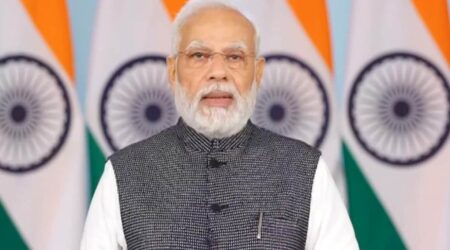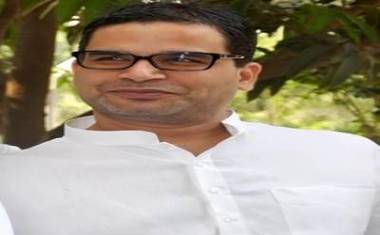By Air Vice Marshal Rajeev Hora
January 26 is normally a day of celebrations all over India. However, for a great number of Kutch inhabitants in 2001, it turned out to be their worst nightmare. Yes, I am talking about the massive intraplate earthquake which hit the region at that time. So sudden it was, and 7.6 on the Richter scale.
Bhuj, which was situated just 20 km from the epicenter, lost close to 14 thousand people. Almost double that figure were seriously injured. Other cities and villages in the region were equally impacted. The devastation was unimaginable with over a million structures damaged or destroyed. Homes, schools, temples, heritage buildings, hospitals- Oh God! Nature’s fury had not been merciful at all!
When you are viewing a tragedy of such magnitude unfolding on the Television, it is just another piece of bad news. Horrifying and unimaginably different it is to witness the mayhem with your own eyes.
Frankly speaking, Venu and I were not quite prepared for what was in store for us as we positioned our AN-32 aircraft on long finals for Bhuj runway 23. It was two days after the quake. Venu’s friends in Bangalore associated with a few NGOs had hurriedly collected a large quantity of critically required surgical instruments and medical supplies.
Their dilemma was how to get it transported to Bhuj at the earliest. There were no flights available and sending by road was out of the question because of potential delays. The runway had also been damaged but quick repairs had been done to accommodate only rescue aircraft. So they had contacted us for any possible logistical support.
We had an AN-32 available and it took just five minutes to convince our Commandant. He picked up the phone right in our presence and got us the required clearance from Air HQ in a jiffy. We gave a green signal to the NGO and the supplies started arriving in the evening. All loaded at night and we were ready to fly off in the morning. People were amazed at the rapidity of our response.
As we cleared off the runway in Bhuj, the ATC came up with multiple instructions to find us a spot to switch off. The whole airfield was swarming with large-bodied transport aircraft from the IAF and many other countries. Almost unbelievable but there were close to ten IL76 class of aircraft in queue on the parallel taxi track awaiting take-off. There was no luxury of overnight stay for the aircraft.
Spirited off-loading teams were toiling hard. There was a flurry of activity on the tarmacs. After all, sending relief aircraft is just one part of the exercise. The daunting task on such occasions is to sift the supplies and make sure they reach where they are genuinely required.
The original ATC had also been destroyed in the earthquake and an ad hoc one had been set up. Even radar services were not available. The very limited ATC staff managed to heroically control dozens of relief aircraft in the week following the tragedy. Very strict slot timings were given for the arrival of the relief aircraft. All arriving crew had to report to the ops room where they were notified of a planned departure time. It was made mandatory for all out-going aircraft to carry a minimum number of injured and their escorts.
Our departure time was allotted three hours away and we were told to carry about thirty injured civilians to Gwalior. Meanwhile, Venu and I were very curious to explore the airfield premises to have a look at the level of damage. We set about exploring on our own. What we saw was nightmarish! An eerie feeling of an abandoned township interspersed with relief camps set up in a few buildings that mother nature had spared.
Building after building that we saw had varied levels of impairment. Some razed to the ground and some holding up precariously as if waiting to fall like a domino. Each one had a story to tell, some of lucky survivals and some of unfortunate losses. Muted wailing and loitering stray dogs, only that left in a ghost town. ‘Doom and gloom’ is probably how I would describe it.
One moment there and the other moment, well not quite. Our walk-around was extremely poignant and distressing. Our hearts cried shamelessly. As we were passing by a ‘recently built’ and ‘even more recently destroyed’ set of quarters for married people, my eyes suddenly spotted an embedded inauguration stone fallen onto the floor. Coming closer cautiously, I could read off the name of the senior official who had done the honors.
I was not surprised to see the name on the plummeted stone. The gentleman in question had a penchant for seeing his name on every possible foundation and inauguration stone. Wherever he got posted, his sphere of influence would never be spared of his attempts to leave a mark on the sands of time. A ‘Shah Jahan reincarnate in search of immortality’, we used to call him.
What was the quibble about, I asked? About taking credit for signing an approval on a note on file? Were these not just pieces of stone and mortar put together to make a biggish structure? Or was it about metaphorical political messages through an almost 1000 crore expenditure? “Organizational narcissism and nothing else, almost pathological”, debates my friend seated beside with an aura of finality. But then has the project not provided employment to thousands of artisans and workers? I justify rather unconvincingly.
I am supposed to feel proud. However, I am strangely not able to force myself to feel so. I am driving but my mind is still not at peace. I wonder, what is more important? The daunting impressiveness of the new building or the quality of decisions that should come out from the confines of the sanctorum?
My route to Chandigarh takes me past the huge mountain of stinking litter on the Ghazipur Landfill. The biggest and ugliest garbage collection in Asia. The capital city which houses the parliament finds it embarrassing to even acknowledge this blot.
I speculate silently, how much would it cost to remove? That is, if ever it is put on top of our priority list. Spread over a very large expanse, it is as tall as the iconic Qutub Minar and growing even further by the year. I guess it is no less than a monument today. But of course of our wretched callousness, indifference and misplaced priorities.
“Make them or raze them?” Monumental and existential choices indeed for some. Perhaps they have no choice, I reason kindly. Out of the smelling range of apathy, I drive on stoically.

Our walk-around was extremely poignant and distressing
Air Vice Marshal Rajeev Hora superannuated from the Indian Air Force after 37 years of service. He is an accomplished aviator and test-pilot with extensive operational experience. Blog: seekmediation.com
The views expressed are not necessarily those of The South Asian Times
(Pl take his profile with pic attached in a box)












